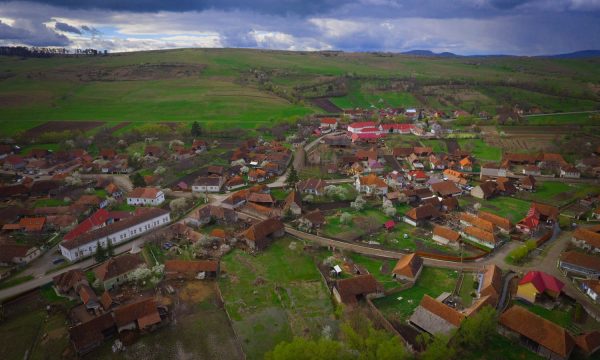The settlement is located 20 km south-east of Odorheiu Secuiesc (Hu: Székelyudvarhely), on the left bank of the Homorod. Homordu Mic (Hu: Kis-Homoród) river crosses the border of the village in a north-south direction.

Balázs Orbán wrote: “from Karácsonyfalva comes Okland (Timon Olkanája) at a quarter of an hour…” Data is scarce about the settlement’s history. The village is first mentioned in the 16th century, in 1546, as Ikland in the archives. There are many assumptions about the origin of the name: derived from the German Ok Land, it means oak countryside; the village coat of arms also depicts an oak tree. According to other sources from 1546 in the Szekler State Archives, the name is related to the name Ágnes, in its earlier form Aglonth. At the time of the the census made in 1576 the village had 20 inhabitant families, in 1614 39 families; later statistics showed that in 1850 there were 640 people living in the village.
Archaeological research identified on several occasions the remains of a Roman military fortress (G. Ferenczi, I. Ferenci). But the medieval church represents the important element of heritage of the village. According to an account from 1789, the old church was fortified by walls, and was of Catholic rite. After the Reformation, the villagers continued to use the church building and it suffered several modifications. The church standing today was built in the place of the oldest churches of the county. Its oldness is testified by the mural fragment discovered, the sacristy, some buttresses which were preserved until 1786, and the Gothic chancel arch which survived until 1810. The current church was built in 1937/38 following the plans of László Debreczeni. The settlement had a school opened as early as 1656, later in 1844 26 boys and 18 girls attended school – quite a high number for those times.
